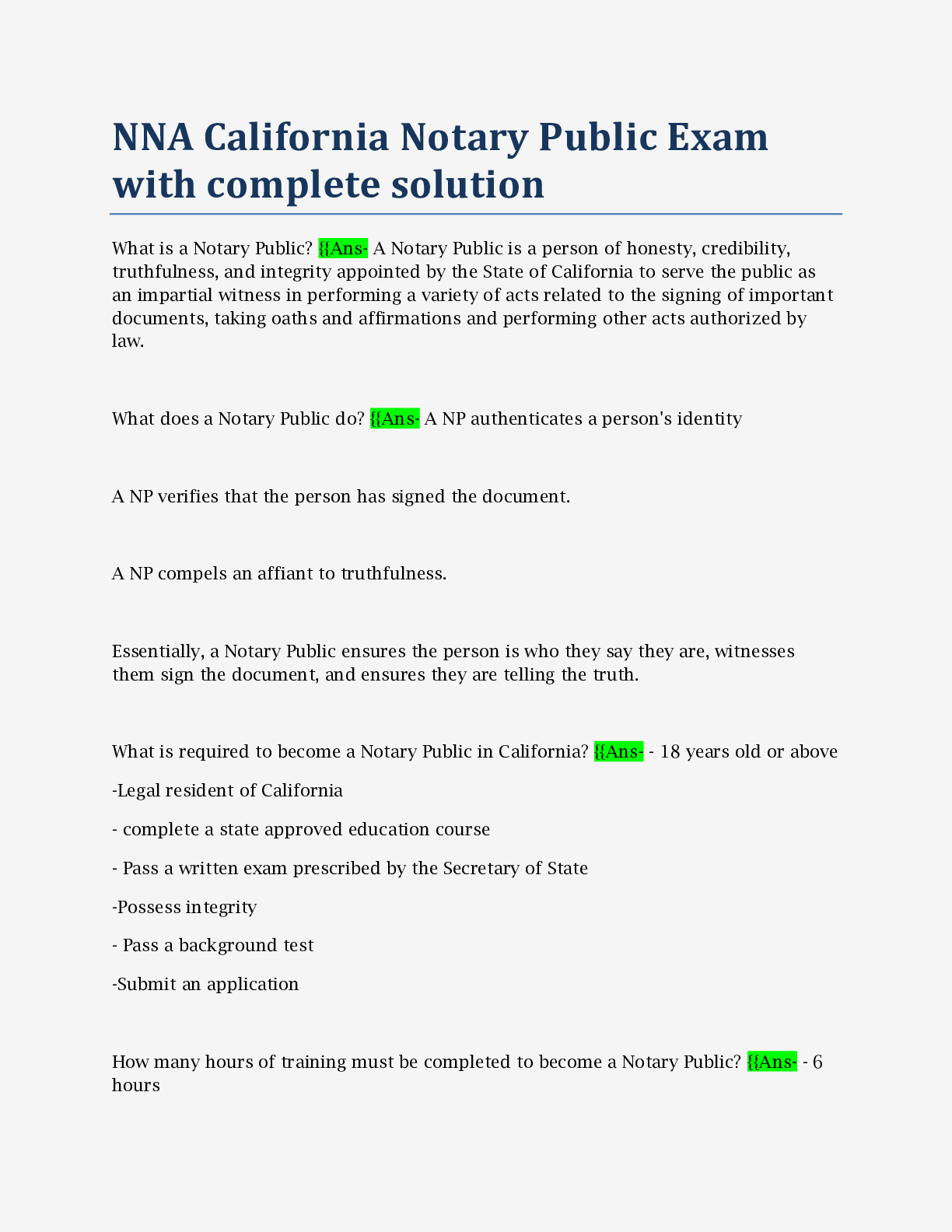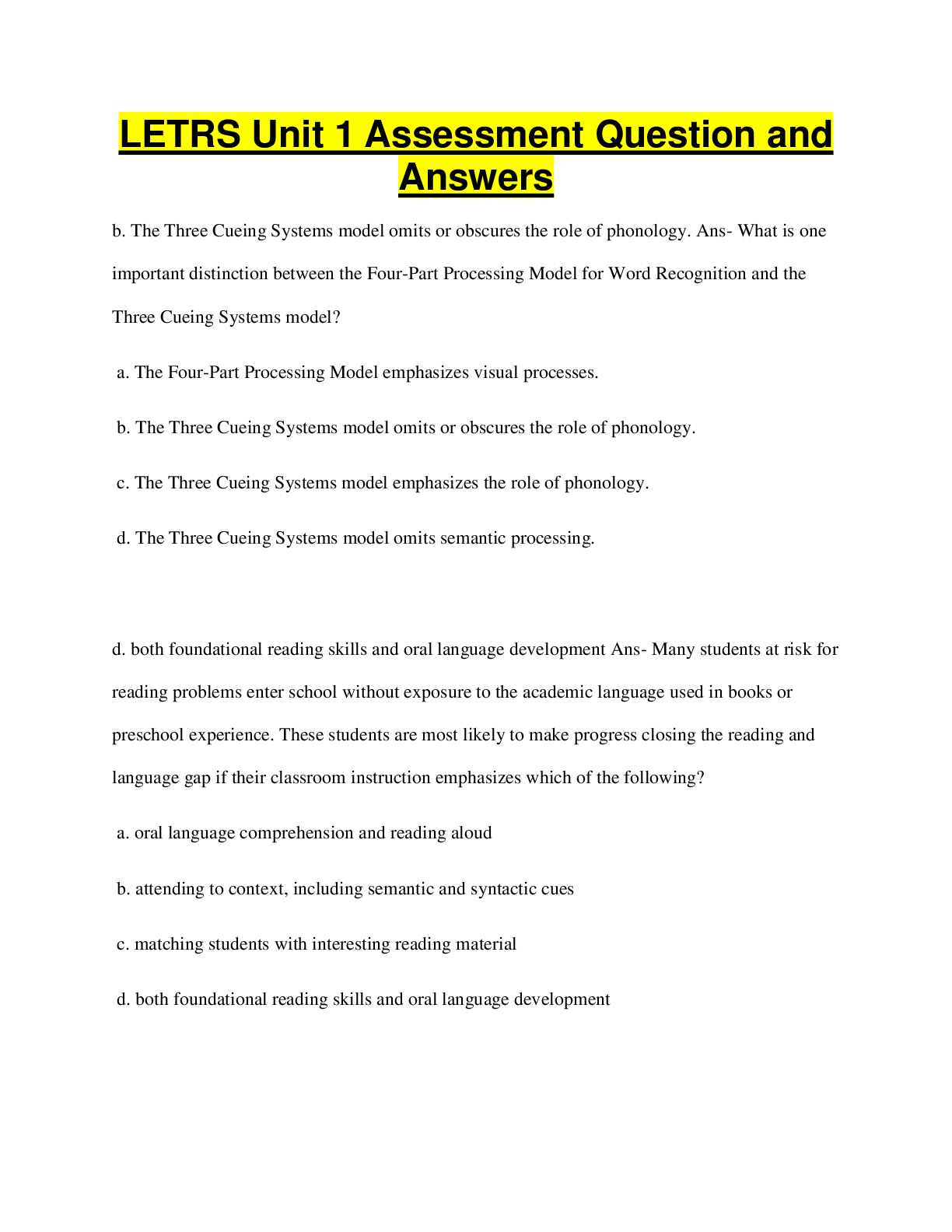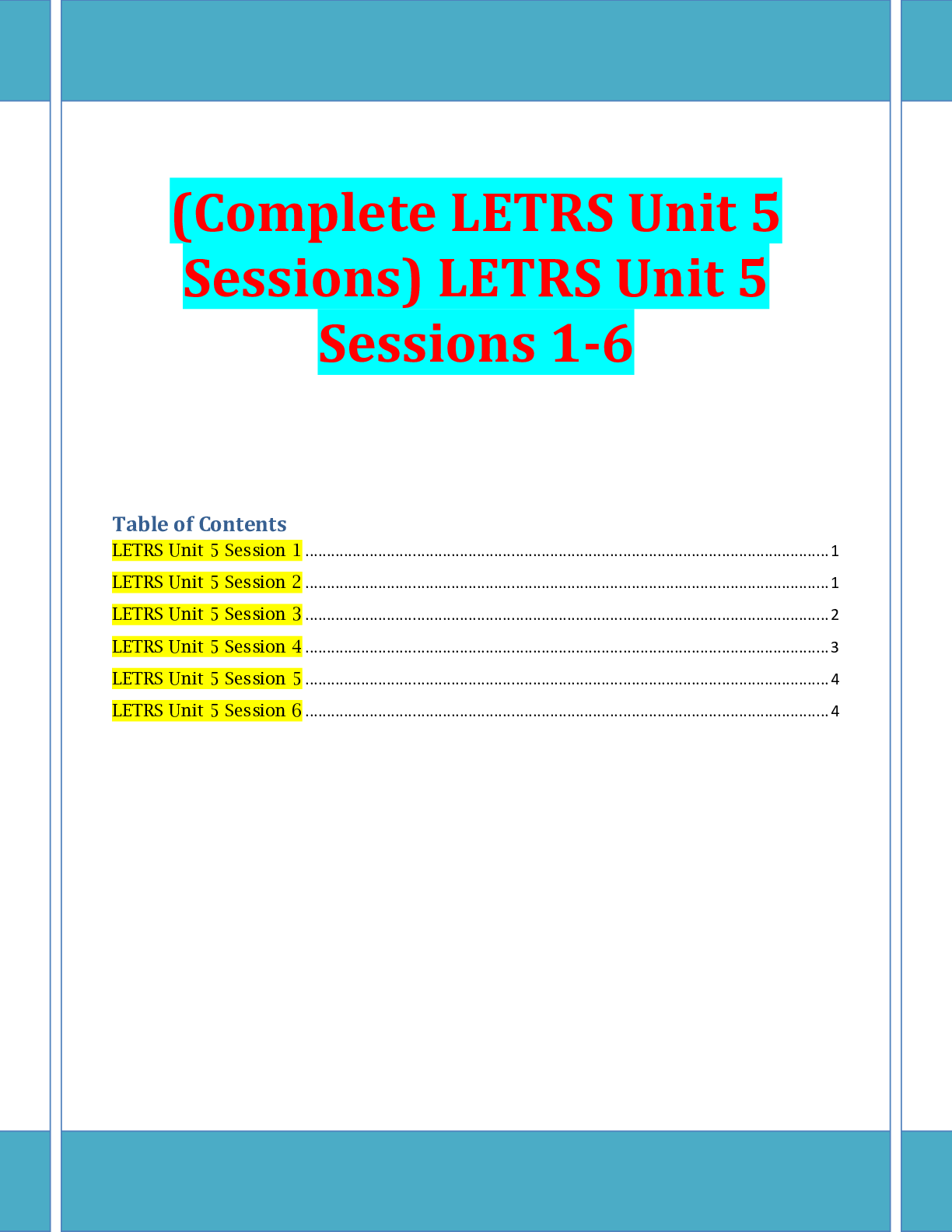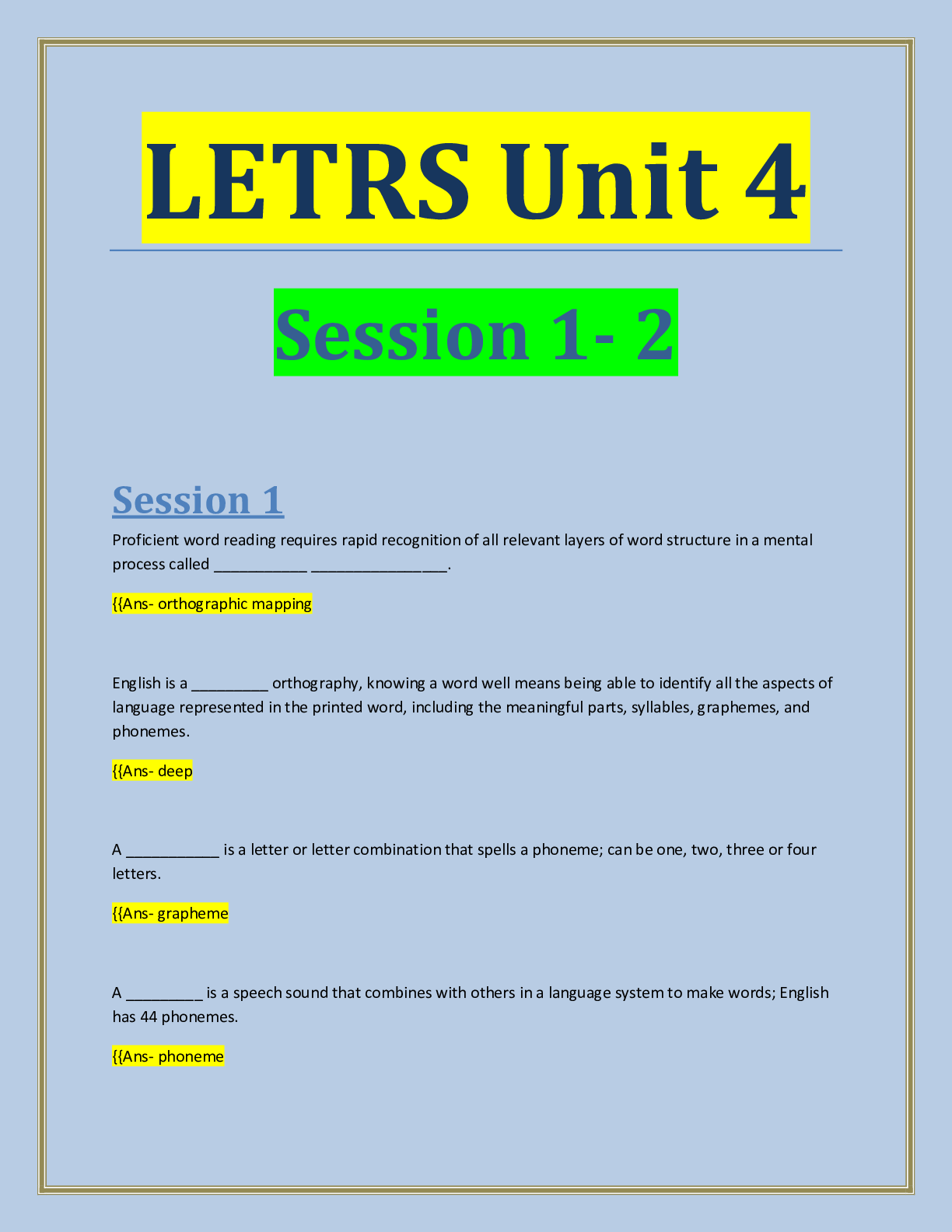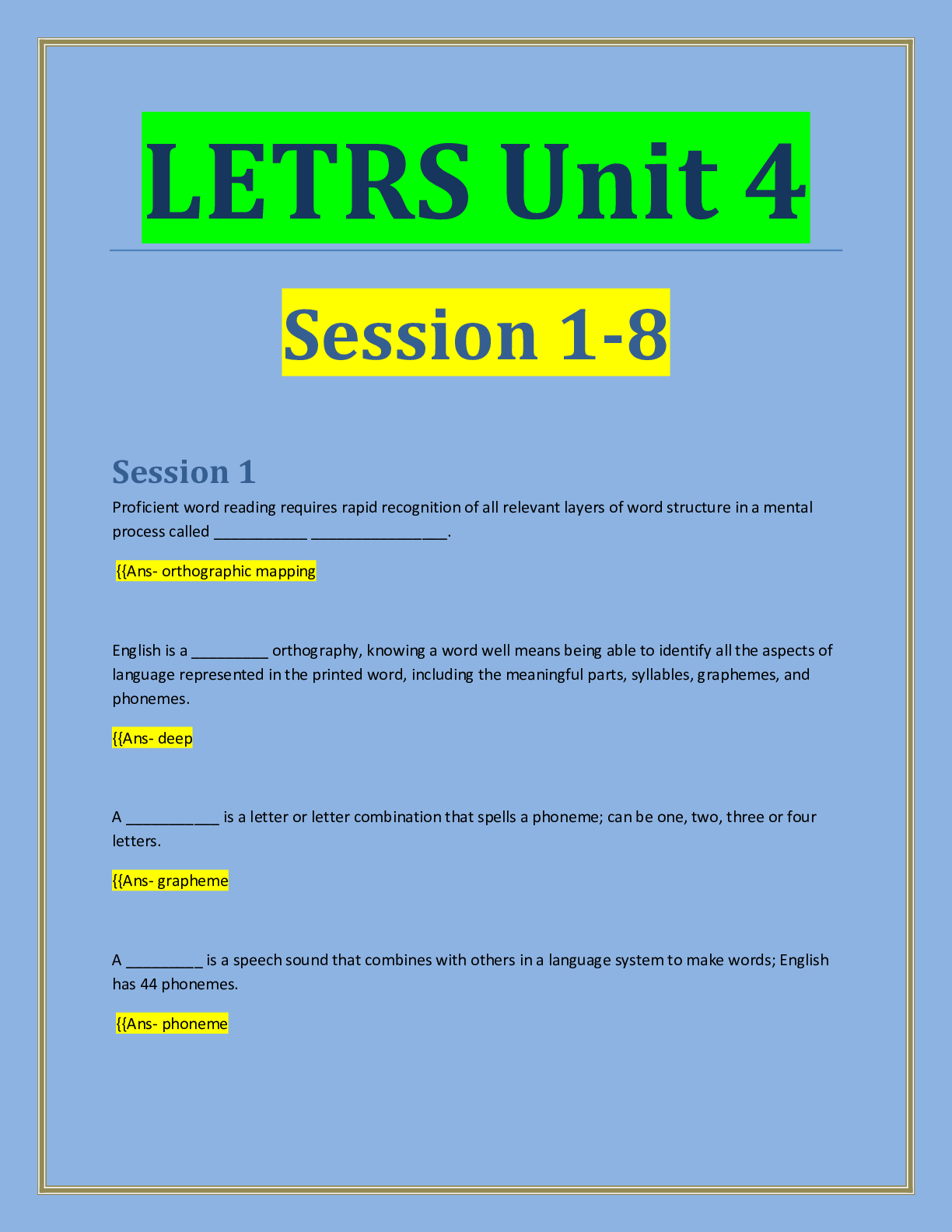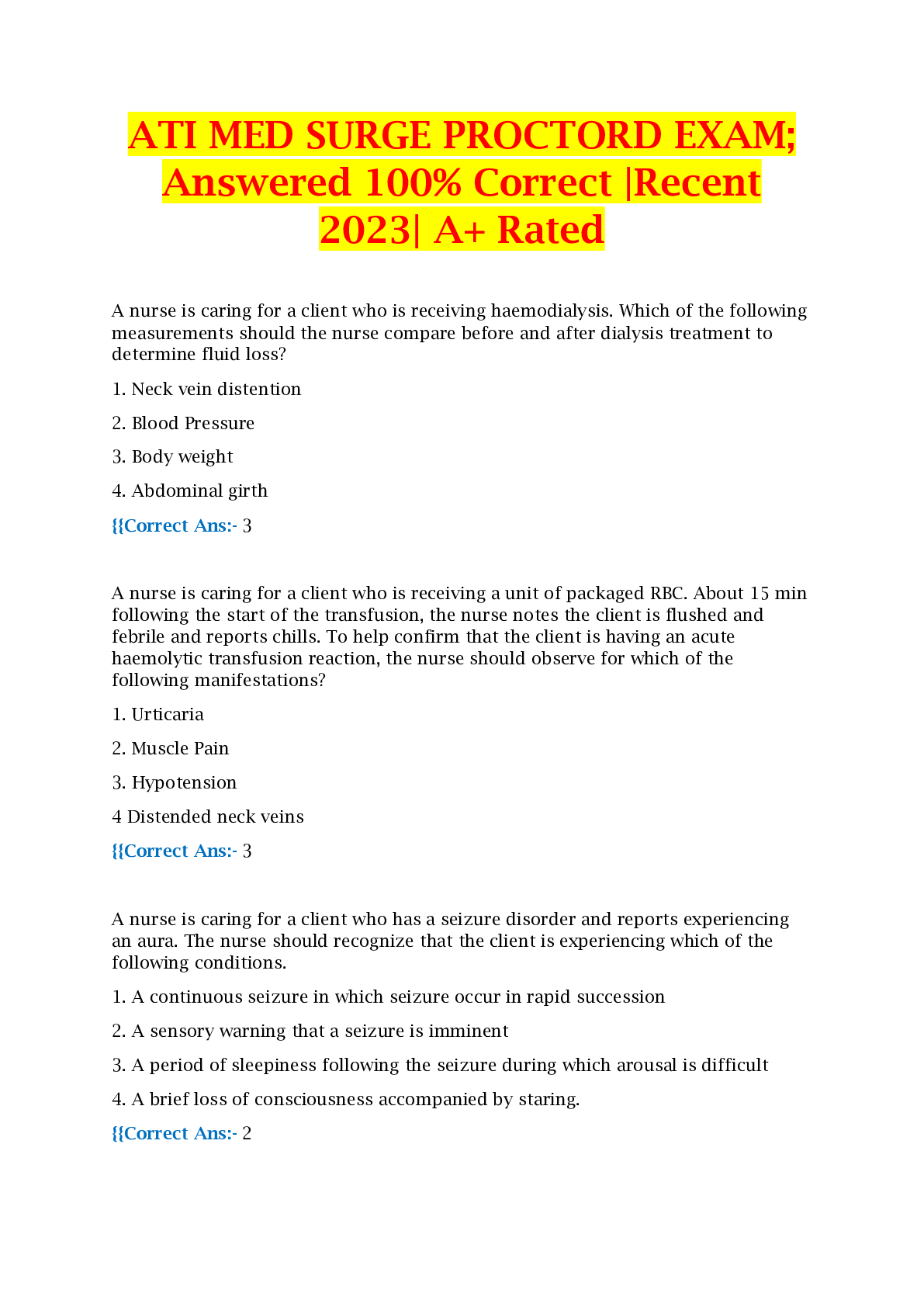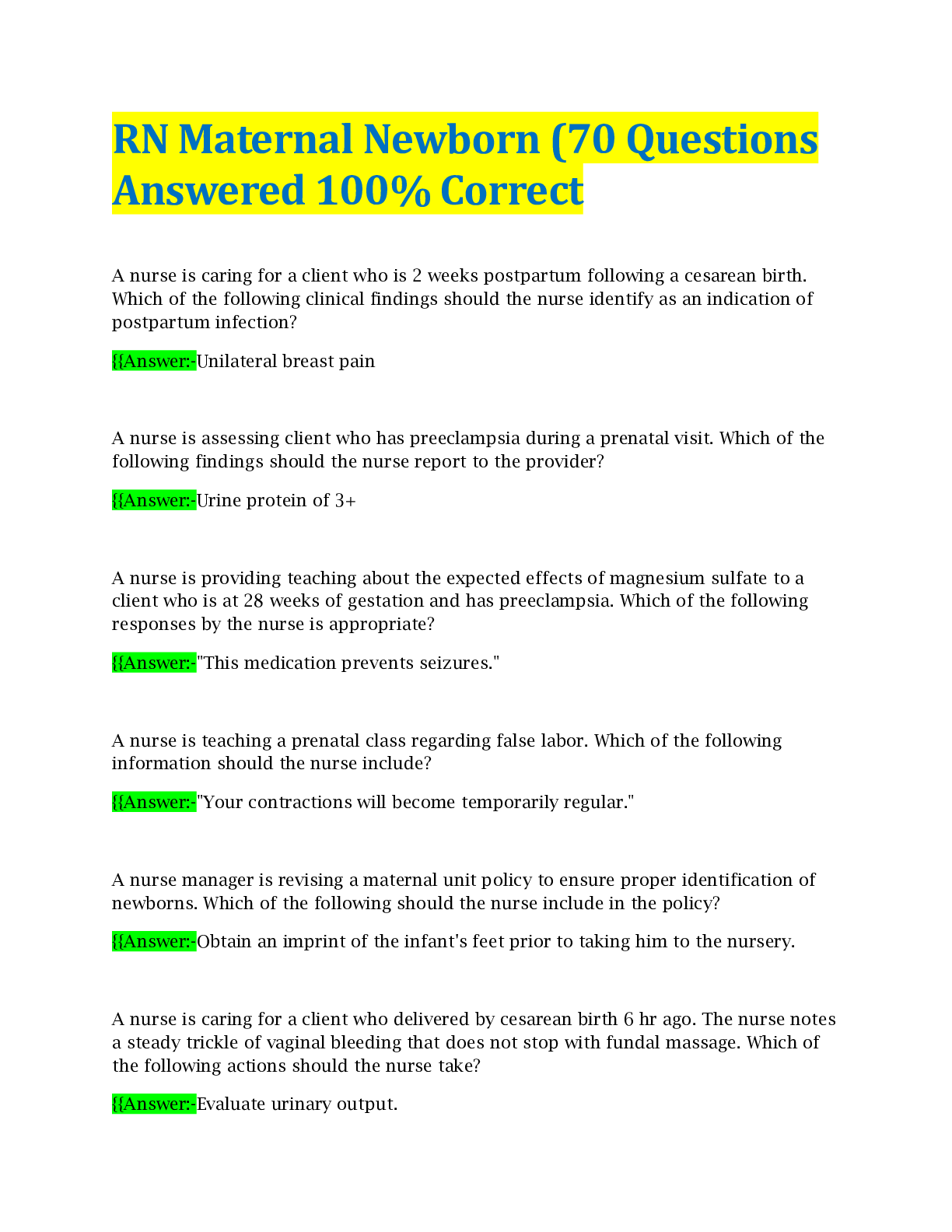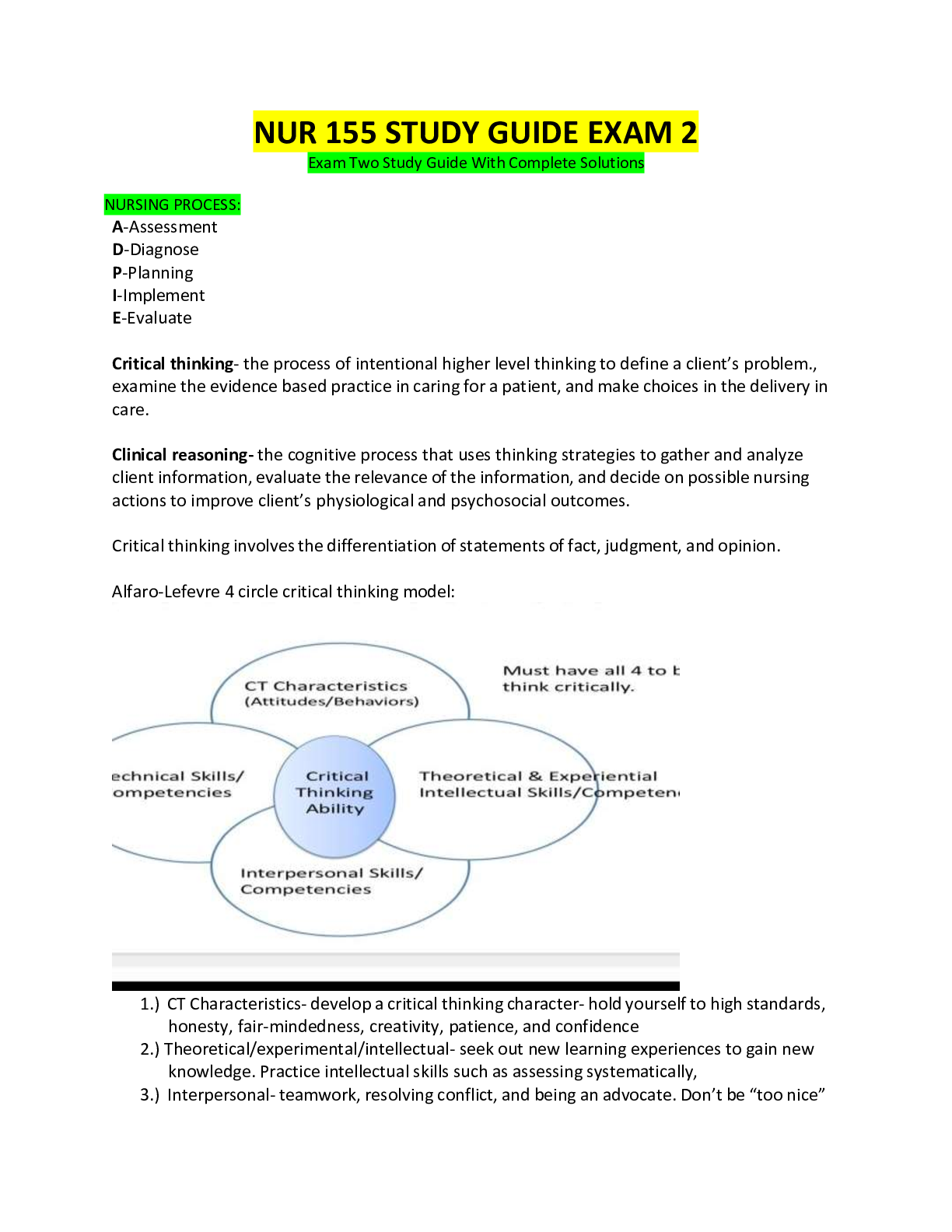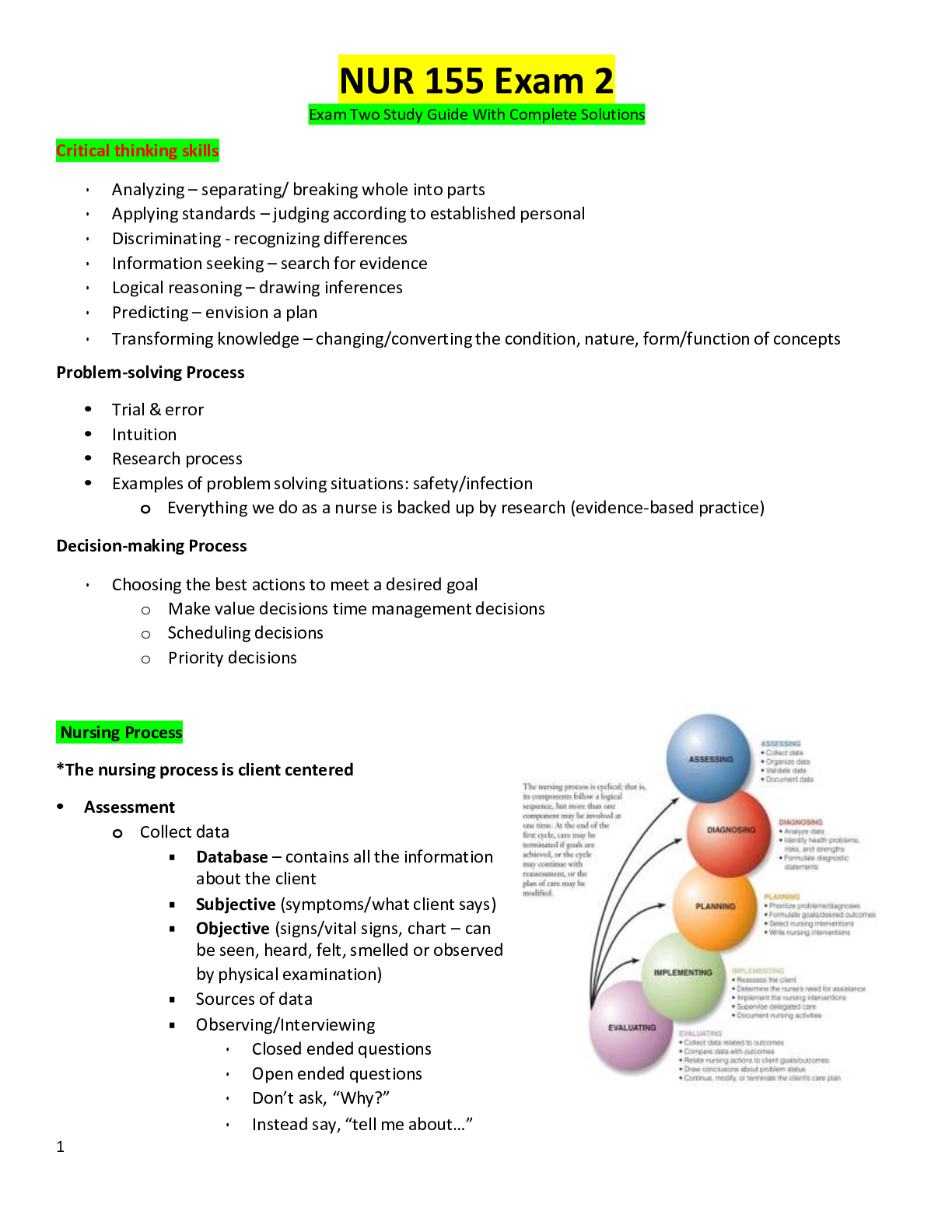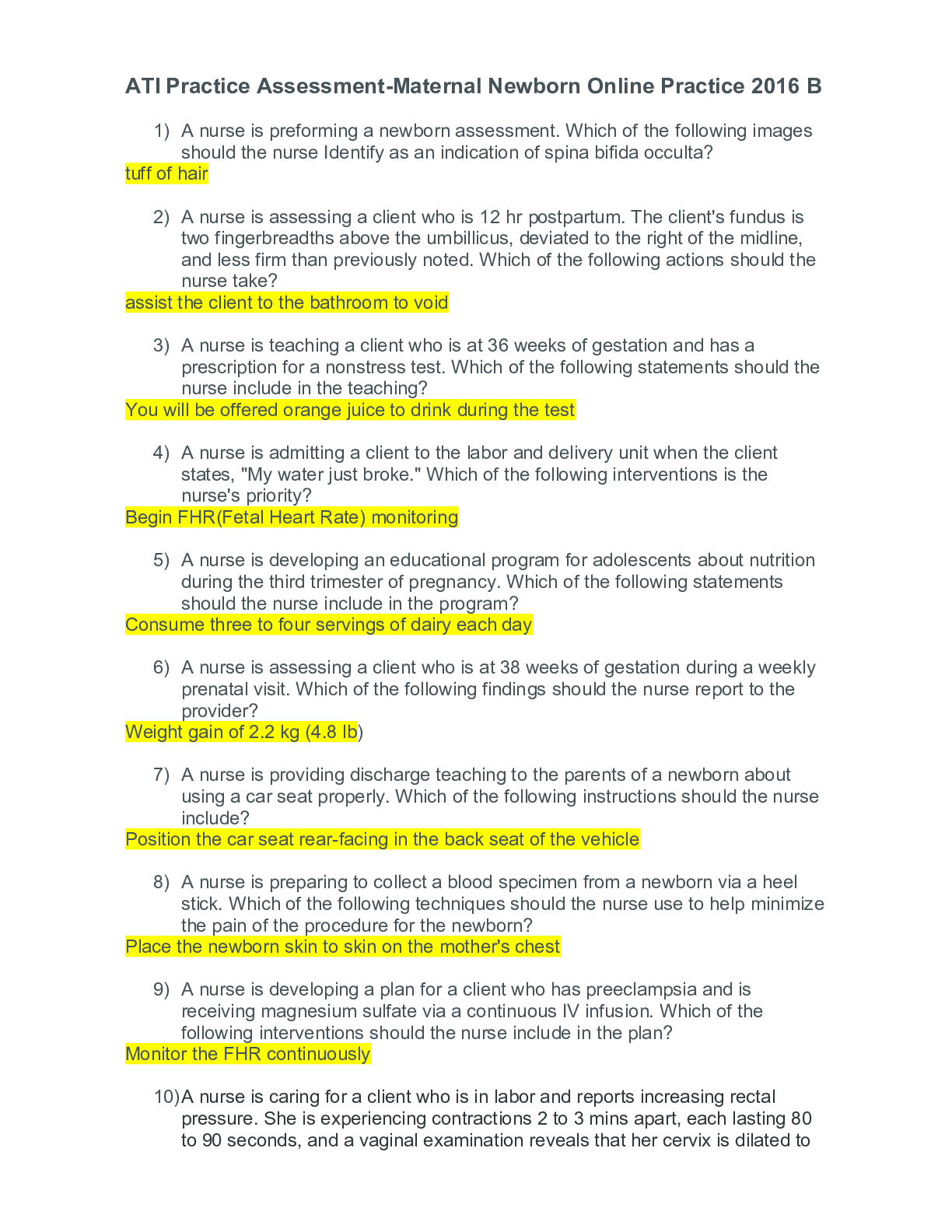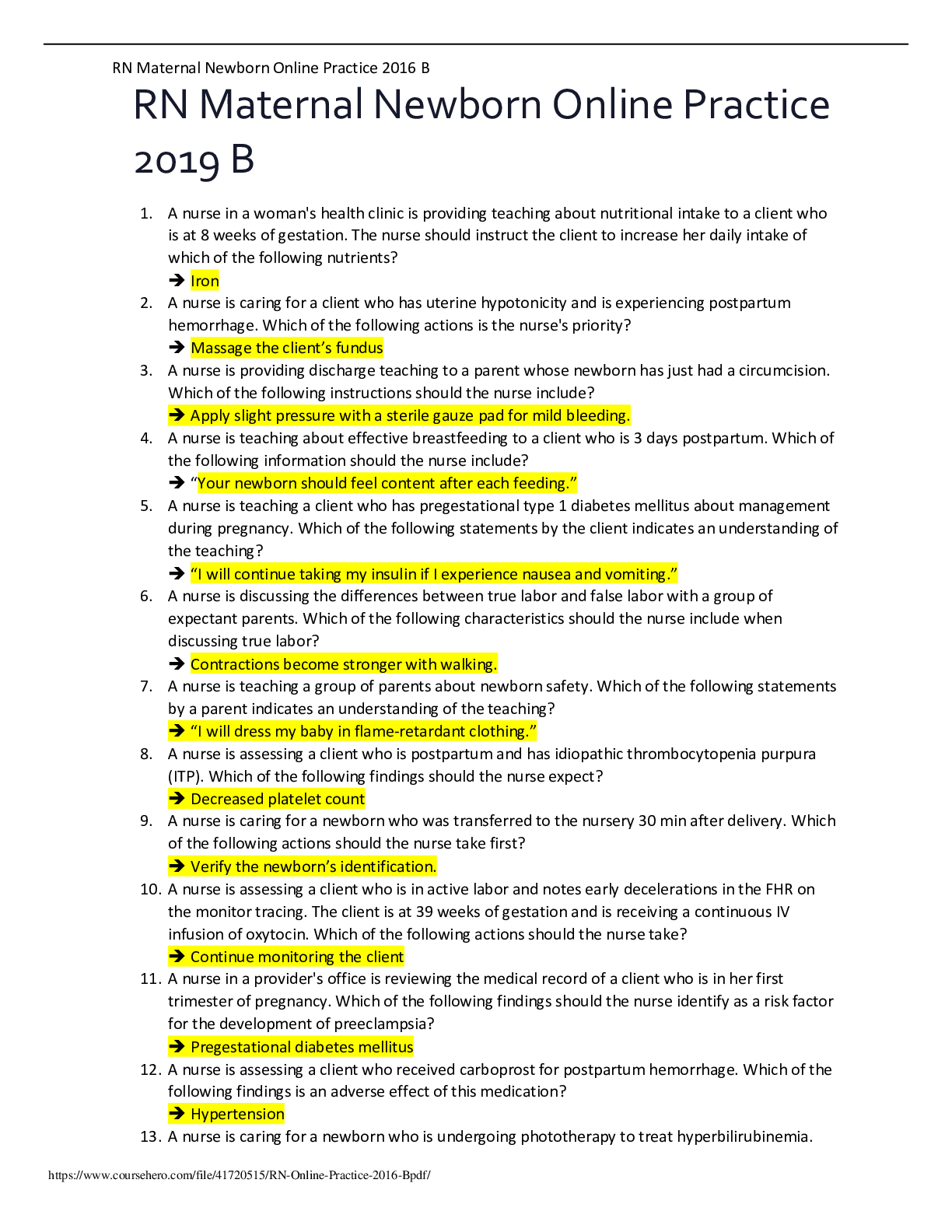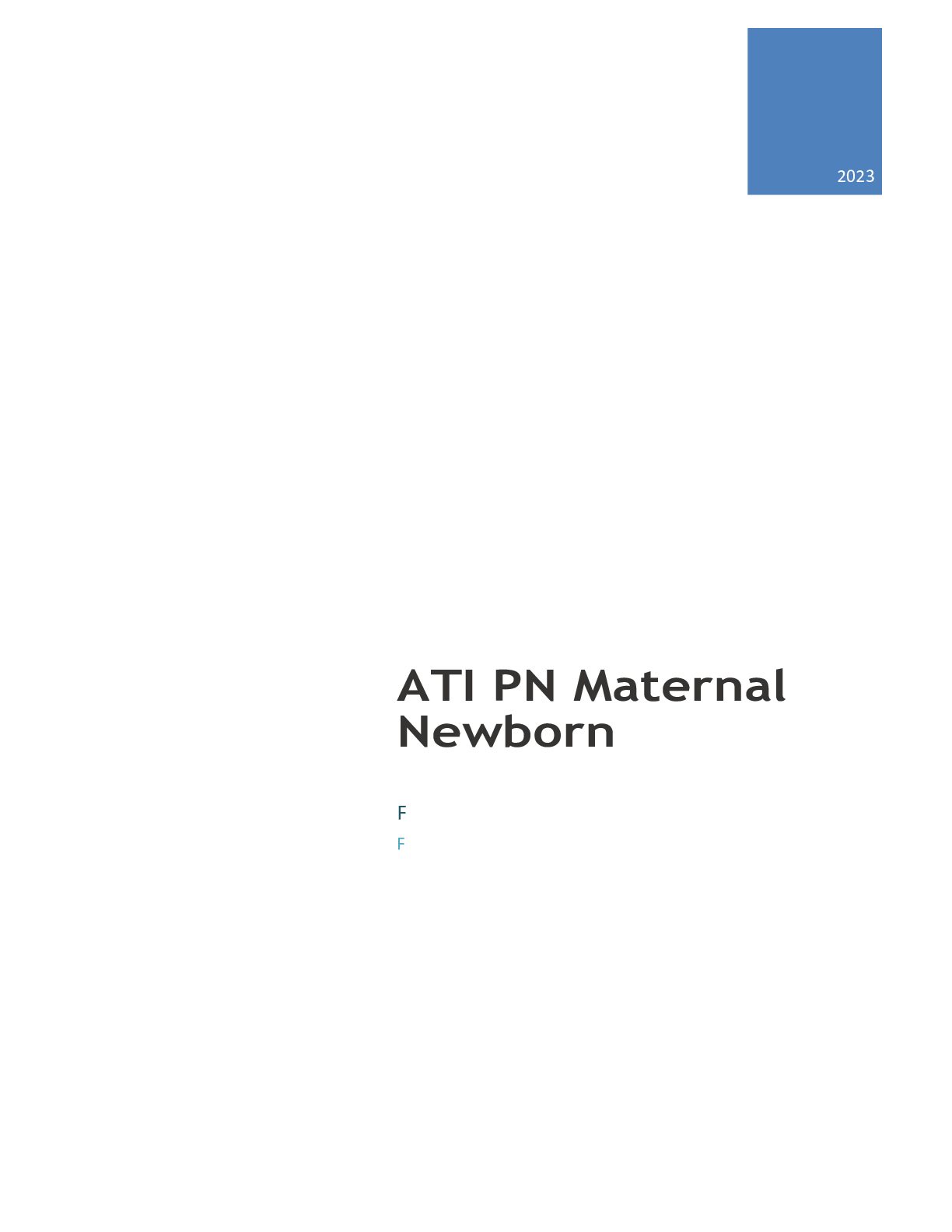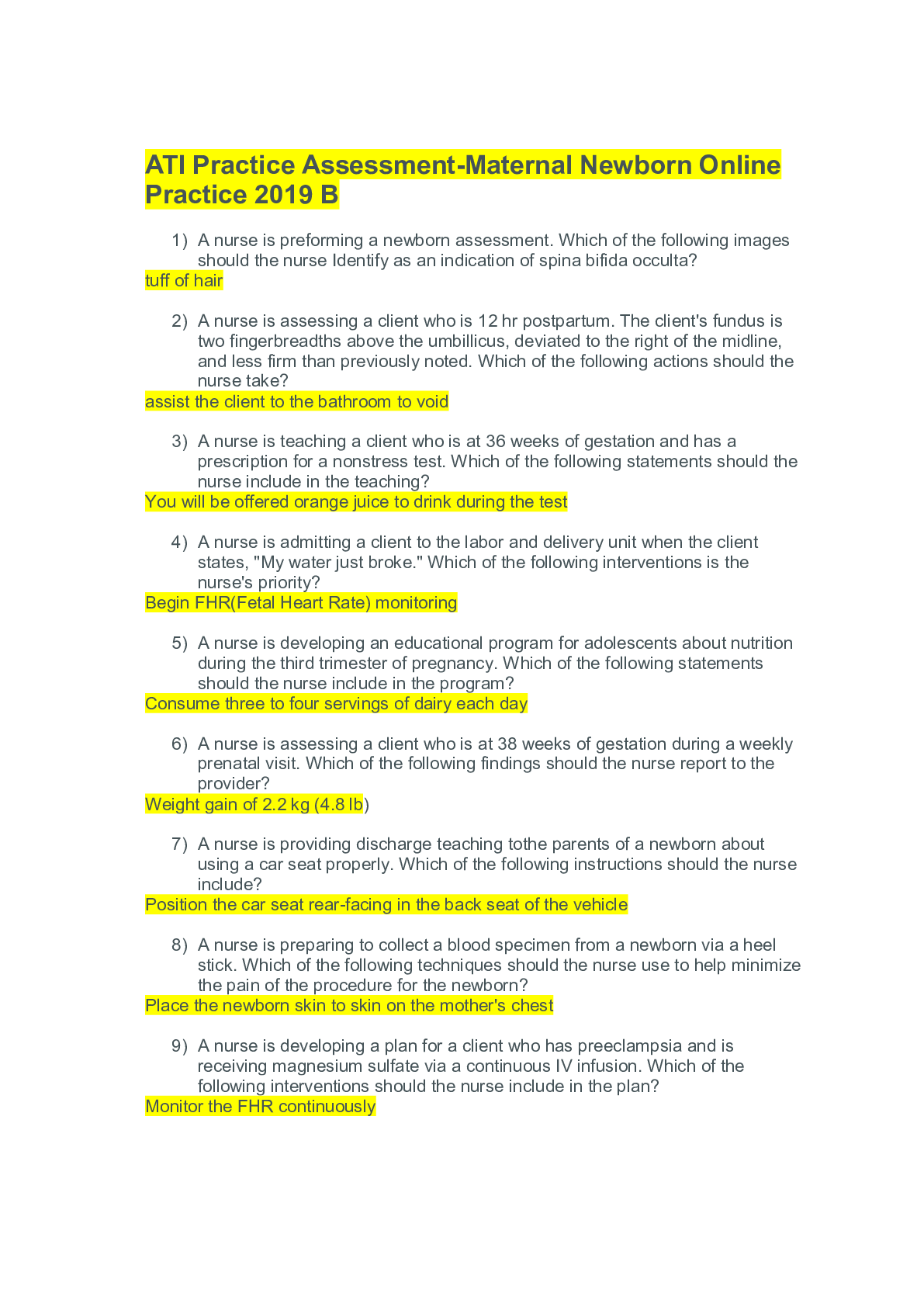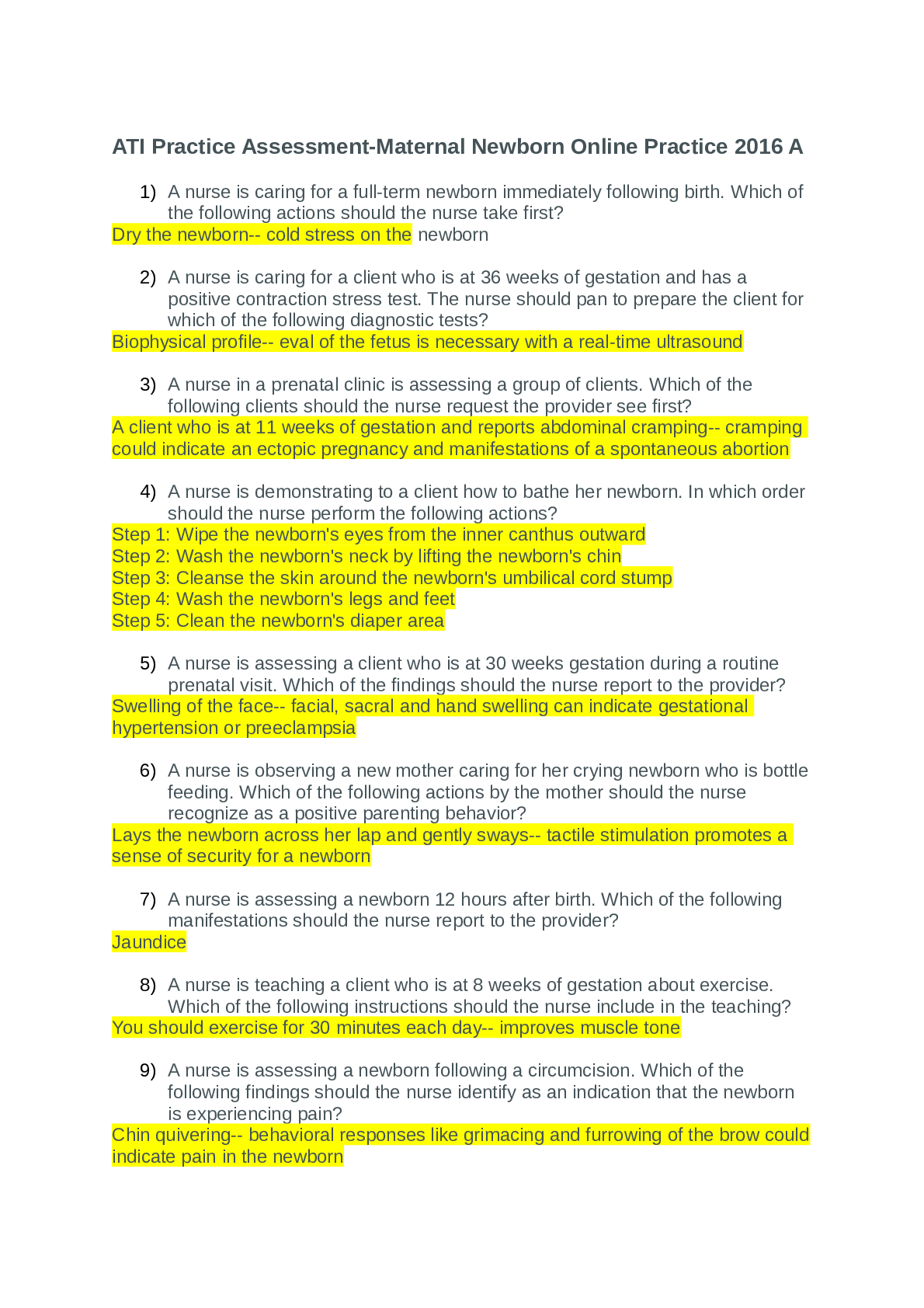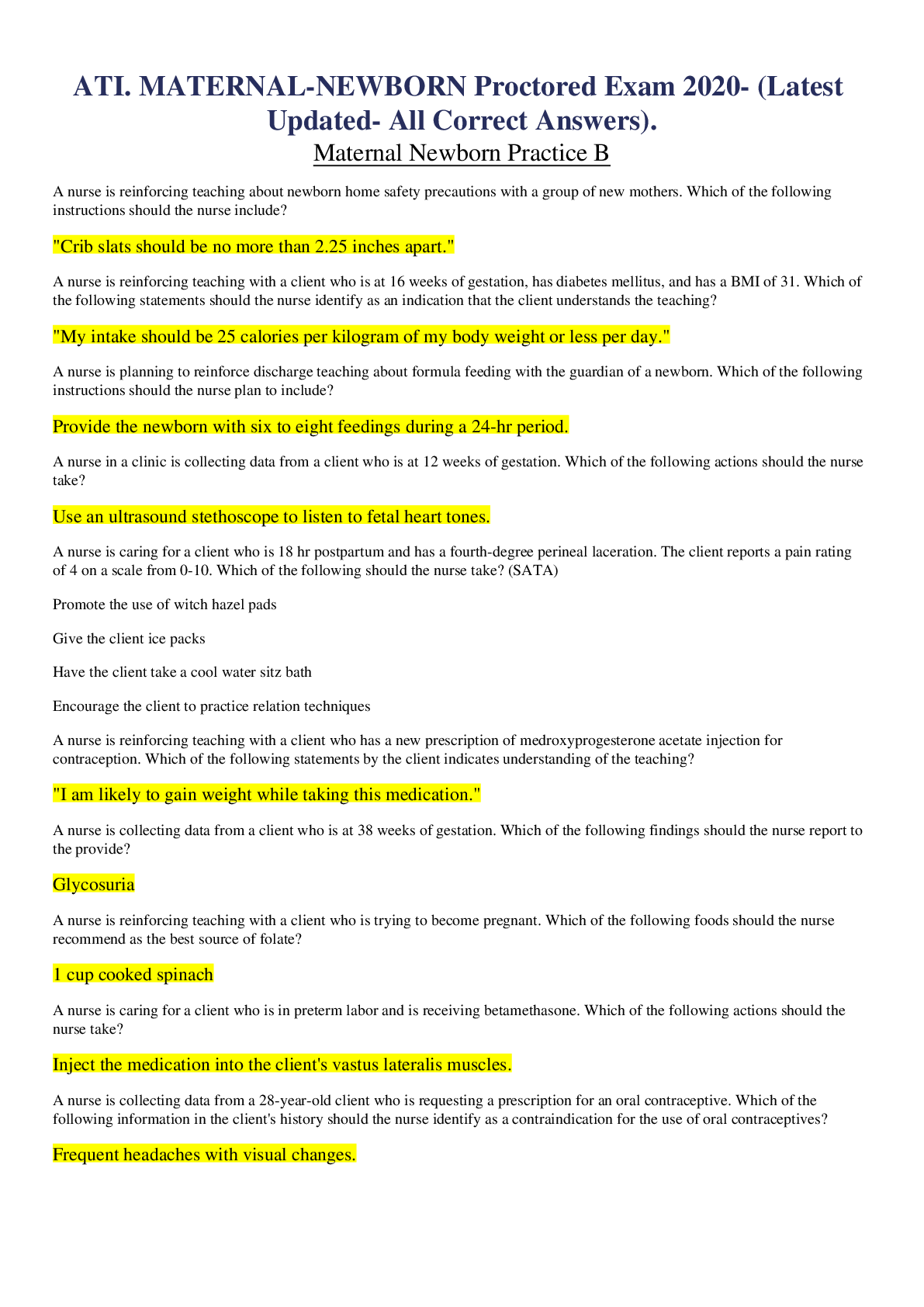Health Care > EXAM > RN Maternal Newborn Online Practice 2019 B – ATI (60 Questions Answered Correct + Rationale) (All)
RN Maternal Newborn Online Practice 2019 B – ATI (60 Questions Answered Correct + Rationale)
Document Content and Description Below
RN Maternal Newborn Online Practice 2019 B – ATI (60 Questions Answered Correct + Rationale) QUIZ: A school nurse is providing teaching to an adolescent about levonorgestrel contraception. Which of... the following information should the nurse include in the teaching? A. "You should take the medication within 72 hours following unprotected sexual intercourse." B. "You should avoid taking this medication if you are on an oral contraceptive." C. "If you don't start your period within 5 days of taking this medication, you will need a pregnancy test." D. "One dose of this medication will prevent you from becoming pregnant for 14 days after taking it." {{Correct Ans:- "You should take the medication within 72 hours following unprotected sexual intercourse." Rationale A. "You should take the medication within 72 hours following unprotected sexual intercourse." Levonorgestrel is an emergency contraceptive which inhibits ovulation to prevent conception. The nurse should instruct the adolescent to take this medication as soon as possible within 72 hr after unprotected sexual intercourse. B. "You should avoid taking this medication if you are on an oral contraceptive." Levonorgestrel, an emergency contraceptive, has no effect on the other oral contraceptive the adolescent might be taking. To prevent pregnancy, this medication should be taken if an adolescent misses a dose of oral contraception. C. "If you don't start your period within 5 days of taking this medication, you will need a pregnancy test." The adolescent should be evaluated for pregnancy if she does not menstruate within 21 days following administration of this medication. D. "One dose of this medication will prevent you from becoming pregnant for 14 days after taking it." Levonorgestrel is an emergency contraceptive that prevents or delays ovulation. Therefore, the nurse should inform the client that she will not be protected from pregnancy if she has unprotected sexual intercourse in the days and weeks after receiving this medication. QUIZ: A nurse is providing discharge teaching to the parents of a newborn about car seat safety. Which of the following instructions should the nurse include? A. Place the shoulder harness in the slots above the newborn's shoulders. B. Place the retainer clip at the level of the newborn's armpits. C. Place the newborn at a 60° angle in the car seat. D. Place the newborn in a blanket before securing them in the car seat. {{Correct Ans:- Place the retainer clip at the level of the newborn's armpits. Rationale A. Place the shoulder harness in the slots above the newborn's shoulders. The nurse should instruct the parents to place the shoulder harness in the slots that are at or just below the newborn's shoulders. B. Place the retainer clip at the level of the newborn's armpits. The nurse should instruct the parents to place the newborn in a federally approved car seat with the retainer clip snugly at the level of the newborn's armpits. C. Place the newborn at a 60° angle in the car seat. The nurse should instruct the parents to position the newborn at a 45° angle to minimize the risk of airway obstruction from slumping forward. D. Place the newborn in a blanket before securing them in the car seat. The nurse should instruct the parents to refrain from placing extra padding, including blankets, between the newborn and the straps of the car seat. Extra padding creates air pockets that decrease the effectiveness of the restraint and can lead to injuries. QUIZ: A nurse is caring for a client who has preeclampsia and is receiving a continuous infusion of magnesium sulfate IV. Which of the following actions should the nurse take? A. Restrict hourly fluid intake to 150 mL/hr. B. Have calcium gluconate readily available. C. Assess deep tendon reflexes every 6 hr. D. Monitor intake and output every 4 hr. {{Correct Ans:- The nurse should have calcium gluconate readily available Rationale A. Restrict hourly fluid intake to 150 mL/hr. The nurse should restrict hourly fluid intake to no more than 125 mL/hr. The client's urine output should be 30 mL/hr or greater. B. Have calcium gluconate readily available. The nurse should have calcium gluconate readily available to prevent cardiac or respiratory arrest in the event the client experiences magnesium toxicity. C. Assess deep tendon reflexes every 6 hr. The nurse should assess deep tendon reflexes every 1 to 4 hr during continuous infusion of magnesium sulfate. D. Monitor intake and output every 4 hr. The nurse should monitor intake and output hourly for clients who are receiving a continuous infusion of magnesium sulfate. QUIZ: A nurse is preparing to perform Leopold maneuvers for a client. Identify the sequence the nurse should follow. (Move the steps into the box on the right, placing them in order of performance. Use all the steps.) - The first step the nurse should take when performing Leopold maneuvers is to palpate the client's fundus to identify the fetal part. Second, the nurse should determine the location of the fetal back. Third, the nurse should palpate for the fetal part presenting at the inlet. Finally, the nurse should palpate the cephalic prominence to identify the attitude of the head. QUIZ: A nurse is teaching a client who is at 35 weeks of gestation about manifestations of potential pregnancy complications to report to the provider. Which of the following manifestations should the nurse include? A. Shortness of breath when climbing stairs B. Swelling of feet and ankles at the end of the day C. Headache that is unrelieved by analgesia D. Braxton Hicks contractions {{Correct Ans:- Headache that is unrelieved by analgesia Rationale A. Shortness of breath when climbing stairs Shortness of breath is related to the enlarging uterus interfering with the expansion of the diaphragm and is an expected manifestation at 35 weeks of gestation. B. Swelling of feet and ankles at the end of the day Swelling of feet and ankles is due to the enlarging uterus interfering with blood return to the heart and is an expected manifestation at 35 weeks of gestation. C. Headache that is unrelieved by analgesia A headache that is unrelieved by analgesia can indicate preeclampsia and should be reported to the provider. D. Braxton Hicks contractions Braxton Hicks contractions are an indication that the uterus is preparing for labor and is an expected manifestation at 35 weeks of gestation. [Show More]
Last updated: 1 year ago
Preview 1 out of 48 pages
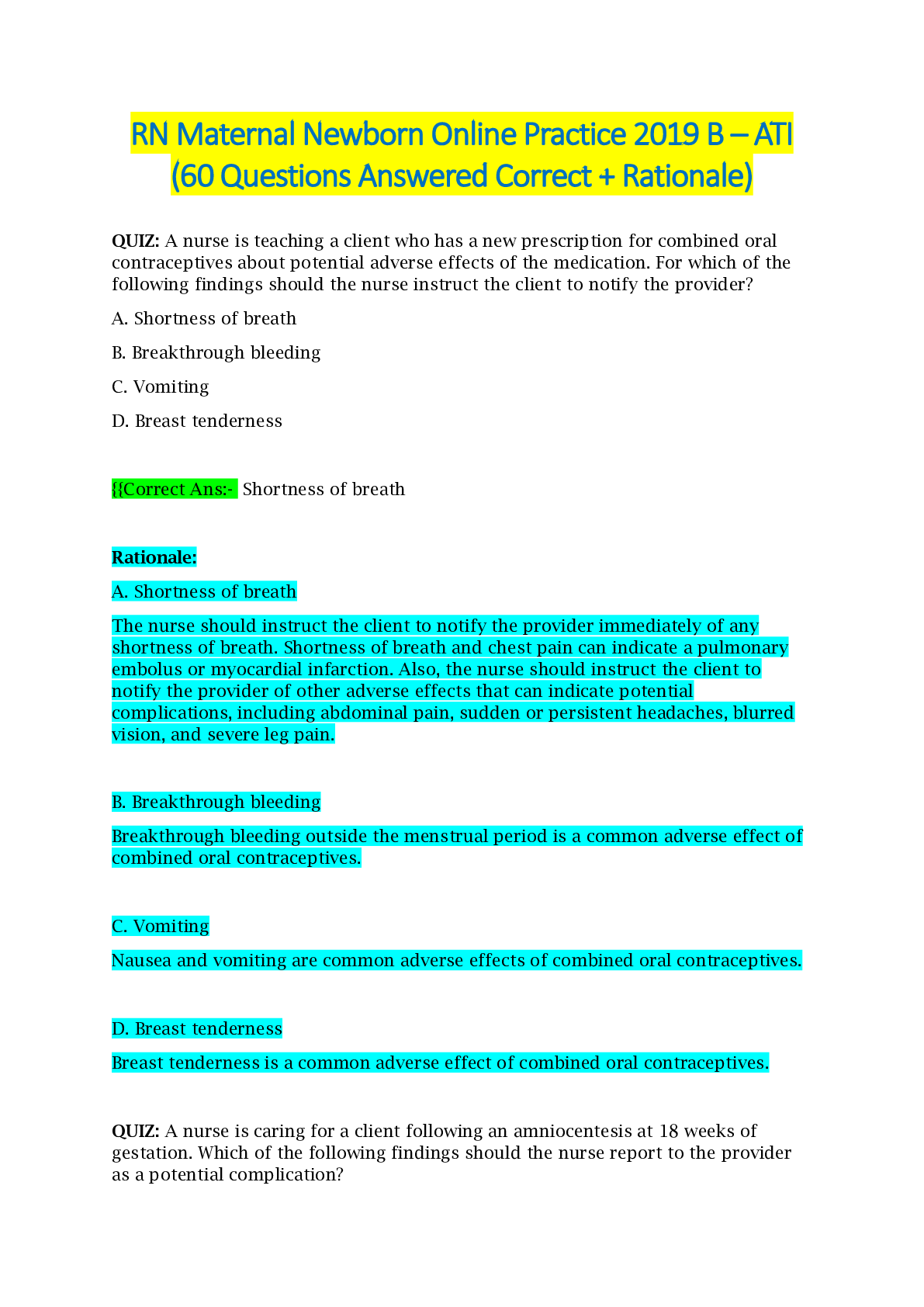
Buy this document to get the full access instantly
Instant Download Access after purchase
Add to cartInstant download
We Accept:

Reviews( 0 )
$12.00
Document information
Connected school, study & course
About the document
Uploaded On
May 07, 2023
Number of pages
48
Written in
Additional information
This document has been written for:
Uploaded
May 07, 2023
Downloads
0
Views
45

